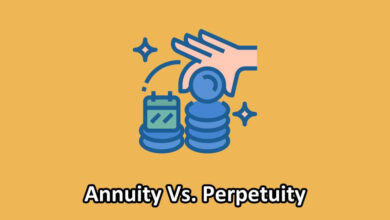Difference Between Consumer Goods and Capital Goods
Consumer goods and capital goods are two essential components of the modern economy, each playing a unique role in the production and consumption cycle. Understanding the distinction between these two categories is crucial for consumers, businesses, and policymakers alike.
Consumer goods impact our daily lives and personal budgets, while capital goods are the backbone of industrial and economic growth.
This blog aims to shed light on the difference between consumer and capital goods, providing clarity on their definitions, examples, and the pivotal roles they play in our world.
Consumer Goods vs. Capital Goods (A Comparison)
| Consumer Goods | Capital Goods |
|---|---|
| Consumer goods refer to products and items designed and produced for the direct use and satisfaction of individuals or households. | Capital goods denote the tangible assets and tools employed by businesses, industries, and organizations to facilitate the production of other goods and the provision of services. |
| Consumer goods are designed for personal use and consumption, with their primary purpose being to satisfy individual needs and desires. | Capital goods are intended for use in the production of goods and services, serving as essential tools for businesses and industries. |
| Consumer goods are used directly by individuals for enjoyment, comfort, or convenience, playing a direct role in enhancing personal lives. | Capital goods are utilized indirectly, as they facilitate the production of consumer goods and services, enabling business operations and industrial processes. |
| Consumer goods are often designed for shorter lifespans and may require frequent replacement or upgrading to meet changing consumer preferences and needs. | Capital goods are typically built to be durable and long-lasting, as they are crucial for ongoing industrial operations and must endure heavy usage. |
| The price of consumer goods is largely influenced by factors such as consumer demand, brand reputation, and marketing strategies, which play a significant role in determining their market prices. | Capital goods have their prices influenced by factors like their technological specifications, production efficiency, and the impact they have on business operations, reflecting their importance in industrial settings. |
| Consumer demand for these items can be more sensitive to economic factors and consumer preferences, leading to fluctuations in demand based on changes in personal income and consumer choices. | The demand for capital goods is closely tied to industrial and business investments, as well as broader economic growth, as businesses rely on these assets to expand and improve their operations. |
What Are Consumer Goods?
Consumer goods are products designed for personal use and satisfaction. These are items you buy for your own consumption, ranging from everyday essentials like food and clothing to recreational products like smartphones and entertainment systems.
Consumer goods fulfill our daily needs and desires, making life more convenient, comfortable, and enjoyable. They add value to our personal lives, enhancing our overall well-being.
Examples of Consumer Goods
- Food and Beverages: Everyday essentials, including groceries, snacks, and beverages.
- Clothing and Apparel: From t-shirts to designer dresses, these items make up our wardrobes.
- Electronics: Smartphones, laptops, and TVs are consumer electronics we rely on.
- Furniture: Couches, beds, and dining tables furnish our homes.
- Personal Care Products: Toiletries, cosmetics, and grooming tools.
What Are Capital Goods?
Capital goods, on the other hand, are the tools, machinery, equipment, and infrastructure used by businesses and industries to produce other goods or provide services. They are the engines driving economic growth and development.
Capital goods are the backbone of businesses and industries. They enable efficient production, transportation, communication, and storage. Without these assets, economic growth and development would stall.
Examples of Capital Goods
- Manufacturing Machinery: Robots, assembly lines, and industrial equipment.
- Commercial Vehicles: Trucks, vans, and forklifts that transport goods.
- Office Infrastructure: Computers, servers, and communication systems.
- Construction Equipment: Cranes, bulldozers, and cement mixers.
- Industrial Buildings: Factories, warehouses, and distribution centers.
Key Differences Between Consumer and Capital Goods
Understanding the disparities between consumer and capital goods is essential. These differences encompass their purpose, usage, durability, price determination, demand, and more. Let’s delve deeper into these distinctions.
Purpose
- Consumer Goods: Consumer goods are designed for personal use and consumption. Their primary purpose is to satisfy individual needs and desires.
- Capital Goods: Capital goods are intended for use in the production of other goods or services. They serve as essential tools for businesses and industries.
Usage
- Consumer Goods: Consumer goods are used directly by individuals for their enjoyment, comfort, or convenience.
- Capital Goods: Capital goods are utilized indirectly, as they facilitate the production of consumer goods and services.
Durability
- Consumer Goods: Consumer goods are often designed for shorter lifespans and may require frequent replacement or upgrading.
- Capital Goods: Capital goods are typically built to be durable and long-lasting, as they are crucial for ongoing industrial operations.
Demand
- Consumer Goods: Consumer demand for these items can be more sensitive to economic factors and consumer preferences.
- Capital Goods: The demand for capital goods is closely tied to industrial and business investments and economic growth.
The Role of Consumer and Capital Goods in the Economy
Consumer goods drive a significant portion of economic activity. High consumer spending is often seen as a sign of a robust economy. The production and sale of consumer goods provide employment opportunities and stimulate economic growth.
Capital goods play a critical role in fostering economic development. They enable businesses to increase their productivity and efficiency. Investment in capital goods can lead to innovation and improved competitiveness on a national and global scale.
Consumer and capital goods are interdependent. The purchase of consumer goods depends on the production and distribution facilitated by capital goods. In turn, the demand for consumer goods drives the need for more capital goods to meet that demand. This interplay is essential for maintaining a healthy and growing economy.
Factors that Influence the Demand for Consumer Goods and Capital Goods
Several factors influence the demand for both consumer goods and capital goods. Here are four key factors for each category:
Factors Influencing Demand for Consumer Goods
- Consumer Income: The income of consumers is a fundamental determinant of demand for consumer goods. When incomes rise, people often have more purchasing power, leading to increased demand for a wide range of goods, from basic necessities to luxury items.
- Consumer Preferences and Tastes: Changing consumer preferences and trends can significantly impact demand. Shifting consumer preferences, driven by factors like fashion, technology, or health consciousness, can lead to fluctuations in demand for specific types of consumer goods.
- Price of Consumer Goods: The price of consumer goods plays a crucial role in influencing demand. When prices rise, demand may decrease, and vice versa. Discounts, promotions, and price competitiveness can stimulate demand.
- Demographics: Factors such as population growth, age distribution, and family sizes can influence the types of consumer goods in demand. For example, an aging population may drive demand for healthcare-related products and services.
Factors Influencing Demand for Capital Goods
- Business Investment: One of the primary drivers of demand for capital goods is business investment. When businesses expand or invest in new technologies, they require machinery, equipment, and infrastructure, which leads to an increased demand for capital goods.
- Technological Advancements: Rapid technological advancements can create a demand for the latest and most efficient capital goods. Businesses seeking to stay competitive and improve productivity often invest in modern equipment and technology.
- Government Policies and Incentives: Government policies, such as tax incentives for capital investment, can stimulate demand for capital goods. These incentives encourage businesses to invest in new equipment, which can boost overall economic growth.
- Global Economic Conditions: The state of the global economy can influence the demand for capital goods. In times of economic growth, businesses often invest in expansion and innovation, leading to higher demand for capital goods. Conversely, economic downturns can reduce such investments.
- Replacement and Maintenance Needs: As capital goods wear out or become outdated, there is a natural need for replacement and maintenance. This ongoing requirement for upkeep and modernization can contribute to a steady demand for capital goods.
Conclusion
In conclusion, consumer goods and capital goods are the pillars upon which our modern economy stands. Consumer goods enhance our personal lives, while capital goods drive economic growth. Recognizing their differences and understanding their roles in the economy is essential for individuals and businesses alike.
As we navigate our daily lives, it’s worth keeping in mind the intricate dance between these two categories of goods, each contributing to the vitality of our economic landscape. Whether you’re buying a new smartphone or a piece of industrial machinery, you are participating in the broader economic symphony, where consumer and capital goods harmonize to shape our world.
FAQs about Consumer Goods vs. Capital Goods
What are Consumer Goods and Capital Goods, and How do they Differ?
Consumer goods are products designed for personal use and satisfaction, while capital goods are assets used by businesses and industries to produce other goods and services. They differ in their purpose, usage, durability, and role in the economy.
What are Some Examples of Consumer Goods and Capital Goods?
Common examples of consumer goods include food, clothing, electronics, furniture, and personal care products. Capital goods encompass industrial machinery, transportation infrastructure, technology equipment, commercial vehicles, and factory buildings.
How do Consumer Goods and Capital Goods Impact the Economy?
Consumer goods drive economic activity, reflecting the overall health of the economy. Increased consumer spending leads to job creation and economic growth. Capital goods, on the other hand, underpin economic development by increasing productivity, fostering innovation, and supporting industrial growth.
What Factors Influence the Demand for Consumer Goods?
Consumer income, preferences, prices, and demographics are primary factors influencing consumer goods demand. Income levels, consumer tastes, price fluctuations, and population demographics all play a significant role.
What Factors Affect the Demand for Capital Goods?
Business investment, technological advancements, government policies, global economic conditions, and replacement/maintenance needs impact the demand for capital goods. Investments in new equipment, technological upgrades, and government incentives all influence capital goods demand.




2 Comments